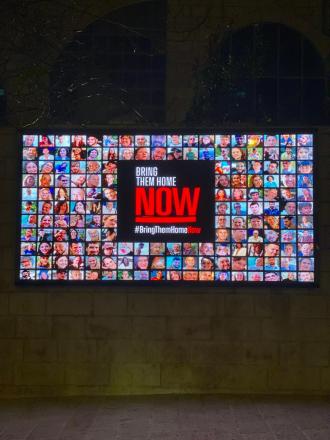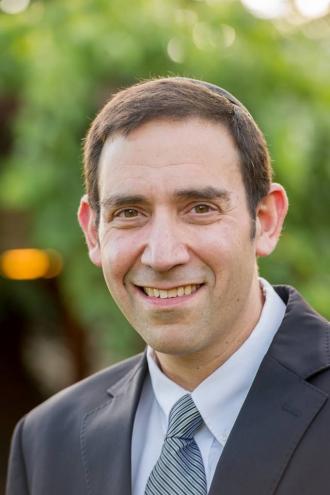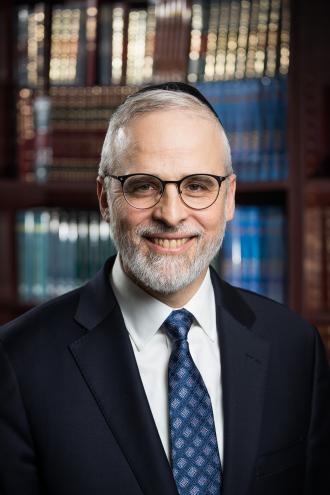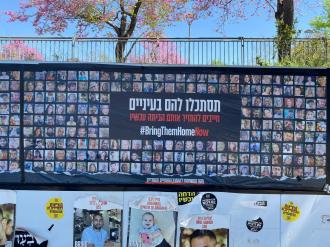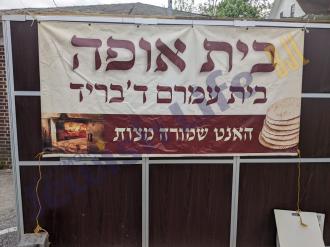Below is an update on the Covid situation from Rav Dr. Aaron Glatt, RAA/Igud's Director of Halacha and Medicine Commision, dated July 30, 2020 (the situation changes day to day). He will provide a live update on Motzei Shabbos, August 2 at 9:45pm NY time
Zoom dial-in:
Meeting ID: 980 3243 6809
Password: SUMMER2020
or by phone: +1 929 205 6099 US
COVID-19 Update July 30, 2020
Rabbi Aaron E. Glatt, MD
Unfortunately, Moshiach did not come (yet!) and I am writing another COVID-19 update.
While there is always a lot of new information, I will send out updates less frequently unless there are significant local or medical changes. I will continue for now our 9:45 PM motzei Shabbos Zoom talk addressing common questions, and I will also devote some time this week to discussing the many questions I am asked regarding shalom bayis issues caused by COVID-19 that might be applicable to all.
You can join the zoom session at Meeting ID 980 3243 6809; Password: SUMMER2020; or by phone: 929 205 6099 or via YouTube link obtainable from yiwoodmerecovidupdate@gmail.com.
What is new epidemiologically speaking?
After weeks of sharp increases in the United States, there were some signs that COVID-19 cases were plateauing, albeit at a higher daily rate than a month ago. Seven-day daily averages of new confirmed cases were the lowest it has been in the U.S. in the past 2 weeks.
Three more states plus Washington, D.C., and Puerto Rico were added to the tri-state quarantine list, bringing the list to almost all the states in the country except those in the Northeast corridor above NY. The CDC warned it may already be too late to really control spread in the US, but clearly efforts have been effective to a certain extent in preventing some spread.
What have we learned from camps?
Camps have been open for a month now, and the information is partially good, although I am involved with one situation where one institution has not been dealing appropriately with potential widespread illness in their camp. Certainly, there have been cases identified in a number of camps, and some have closed in part or ended early, but Boruch Hashem we have not seen large outbreaks in adults associated with camps. This bodes well for school openings in my opinion, although a report in JAMA Pediatrics discussed below has somewhat dampened my optimism.
Does the Chazzan still need to be masked? What about the Ba’alei Kriah?
Unfortunately, based upon the current incidence in the US, even though our local numbers are still low, I do not feel comfortable recommending any changes in our davening. We still have new cases every day coming in to local hospitals. There are still 40-60 new cases in Nassau County daily, with the numbers in NYC also significant. The chazzan and ba’alei kriah are singing loudly and are potentially “contagious” beyond 6 feet (see below). Following our poskim, I remain extra cautious at this time.
A novel paper published in the Journal of Internal Medicine reiterated that universal public masking during the COVID-19 pandemic was one of the most important pillars of disease control. However, most Interestingly, they proposed a new theory why masks are vital. Based on their preliminary modeling, they showed masking reduced the COVID-19 viral inoculum to which a mask-wearer was exposed, leading to milder (or asymptomatic) infection instead of more contagious symptomatic ones.
This “inoculum” theory argues for a major protective effect for the mask wearer à preservation of life and less transmission as society re-opens. This link between masking and lower viral inoculum, resulting in less contagious asymptomatic infection is yet another great reason to mask.
Furthermore, the NY Times had an excellent op-ed piece from a Professor of Civil and Environmental Engineering at Virginia Tech. She presented an excellent review of why social distancing really is important, demonstrating that it keeps us out of the most concentrated parts of other people’s respiratory plumes. So, stay away from one another by one or two meters at least - though farther is safer. And, she exhorted, wear a mask. Masks block aerosols released by the wearer, and masks protect the wearer from breathing in aerosols around them.
Any more exciting news regarding vaccines?
Yes, several phase three vaccine trials did start this week! I know some individuals reading this have already enrolled in such trials, and there will be more opportunities soon to come for those interested, including hopefully at Mount Sinai South Nassau as well as other academic centers in the NYC region.
Any proven published cases of individual getting COVID-19 a second time?
Still nothing. It remains very reassuring, that with tens of millions of COVID-19 cases worldwide, there are still zero published cases, and even unproven reports of reinfection remain quite rare.
What did he say last motzei Shabbos about wood alcohol and hand sanitizers?
Sorry again for the confusion. Here is the link for the FDA statement: https://www.fda.gov/drugs/drug-safety-and-availability/fda-updates-hand-sanitizers-methanol. The FDA warned consumers and health care providers that the agency has seen a sharp increase in hand sanitizer products that are labeled to contain ethanol (also known as ethyl alcohol) but that have tested positive for methanol contamination. Methanol, or wood alcohol, is a substance that can be toxic when absorbed through the skin or ingested and can be life-threatening when ingested. That wasn’t so hard to say, was it?
The FDA advises consumers not to use hand sanitizers from the companies, or products with these names or NDC numbers at this link: https://www.fda.gov/drugs/drug-safety-and-availability/fda-updates-hand-sanitizers-methanol#products.
What’s with the hydroxychloroquine video on the Supreme Court steps?
Medscape tried to get information on the doctors involved in this video. They could not come up with any information showing that they actually treated COVID-19 patients, as some did not even have medical licenses or active medical careers or were not internists.
The American College of Physicians the largest and most respected internal medicine society in the world, published the following statement in the Annals of internal Medicine: Three large, randomized controlled trials with strong study designs ceased enrollment for the hydroxychloroquine versus control comparison early due to lack of efficacy in preliminary analyses. In addition, the 2 literature updates produced no evidence to alter these conclusions. The U.S. Food and Drug Administration also recently revoked its emergency use authorization for chloroquine and hydroxychloroquine for the treatment of COVID-19 due to potential significant harms and lack of benefits.
What new information was published this week?
1) The Journal Science Advances published a novel paper as to why patients with COVID-19 lose their sense of smell. One would have thought the virus was attacking sensory neurons, the cells involved in smell. However, researchers at Harvard Medical School showed the virus is incapable of doing this. Instead, certain “support” cells are injured, with the good news being they can more quickly regenerate and heal than sensory cells. As a result, the authors stated that most patients regained their sense of smell in several weeks.
2) As I mentioned last week, a large high school COVID-19 outbreak in Jerusalem occurred upon school reopening. Data on this was published this week in Eurosurveillance.
Testing of the complete school revealed 153 students (13.2%) and 25 staff members (16.6%) were COVID-19 positive. Overall, some 260 persons were infected (students, staff members, relatives and friends). Classes in the affected school were more crowded than the average elsewhere.
They concluded that classmates and teachers should be considered close contacts (particularly in crowded classes), as should students in groups mixing several classes, extra-curricular activities and school buses. This will obviously be something to be considered as we reopen our Yeshivas and schools.
3) An Israeli study published in the Annals of Internal Medicine looked at all vaccines (57) that were FDA-approved between January 1996 and December 2015. This comprehensive review of 20 years’ worth of data found that U.S. vaccines were remarkably safe, thanks in part to a robust ongoing safety surveillance program post marketing. Over this 20-year period, only one vaccine had to be recalled, and unexpected complications were mostly of limited clinical significance. Bodes well for COVID-19…
4) Why do some COVID-19 patients transmit virus, while others don’t?
A JAMA editorial provided new insights into this important question based upon several published papers. The secondary attack rate for COVID-19 is actually low. Case series that have evaluated close contacts of confirmed COVID-19 patients reported only about 5% of contacts become infected. However, even this low attack rate is not spread evenly but varies depending on the duration and intensity of contact. The risk is highest among household members, with transmission rates between 10% - 40%. Close but less sustained contact such as sharing a meal is associated with a secondary attack rate of about 7%, whereas passing interactions among people shopping is associated with a secondary attack rate of 0.6%. Very reassuring to people who have a transient exposure to an unmasked person near them in an office, train or other setting for a brief period of time.
5) Mothers infected with COVID-19 are unlikely to pass disease to newborns when proper precautions are taken according to The Lancet Child & Adolescent Health. They reported no cases of viral transmission among 120 babies born to 116 mothers with COVID-19, even though they shared a room and the mothers nursed these babies. All neonates were tested at 24 hours of life and none were positive for COVID-19. Almost all had a repeat COVID-19 test at 5–7 days of life – and all were negative. And 88% were also tested at 14 days of life and none were positive then either. No baby had any symptoms of COVID-19. In addition, the American Academy of Pediatrics noted that after months of national and international experience with newborns born to mothers who tested positive, no published report has identified an infant who has died during the initial birth hospitalization as a direct result of COVID-19 infection. Therefore, they officially now recommend that mothers with COVID-19 may room-in with their newborn infants according to usual center practice, and continue to endorse moms to breastfeed their babies, even if infants could get COVID-19 while breastfeeding. Very reassuring…
6) Two more published studies demonstrated that treatment with steroids or immune inhibitors was beneficial. The Journal of Hospital Medicine found patients with high inflammation levels treated with steroids had a 75% reduction in risk of going on mechanical ventilation or dying. And JAMA open Network showed that Interleukin 7 (IL-7) can be safely administered to critically ill patients reversing a pathologic hallmark of COVID-19 infection. They concluded that IL-7 alone or in combination with other therapies warrants serious consideration for treating COVID-19.
7) And speaking of therapy, convalescent plasma therapy is finally - possibly - going to obtain emergency authorization use FDA approval next week. While the evidence fully supporting this is still scant, positive published data are forthcoming.
8) In my experience COVID-19 has been one of the most complex viruses we have ever had to deal with, considering the many conflicting scientific reports published. So, I will conclude this update with more conflicting scientific news regarding COVID-19 in young children. JAMA Pediatrics reported on 145 patients with mild to moderate illness within 1 week of symptom onset: 46 children younger than 5 years; 51 children 5 to 17; and 48 adults aged 18 to 65 years. They showed that older children and adults had similar levels of viral nucleic acid, but the children younger than 5 years had significantly greater COVID-19 nucleic acid detected in their noses. What does this mean re transmission? Unknown, but certainly more to come…
On that note,
Have a great Shabbos.

